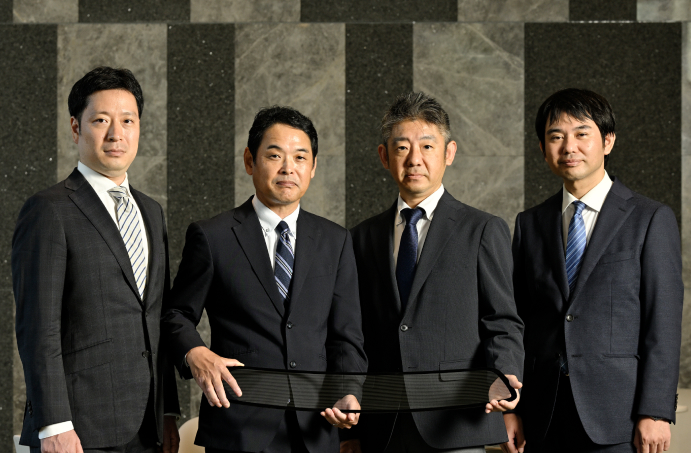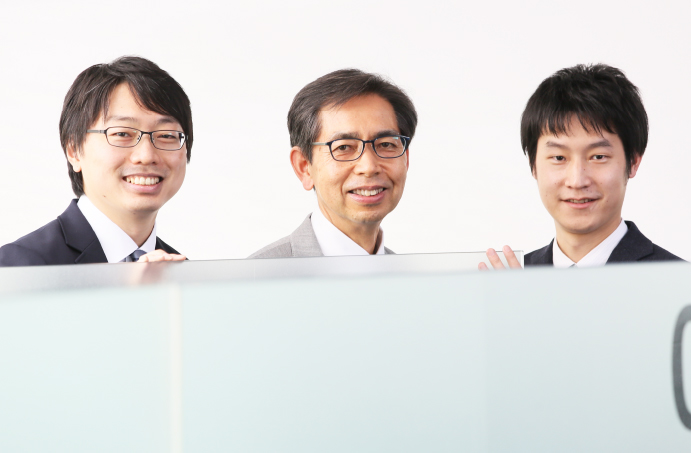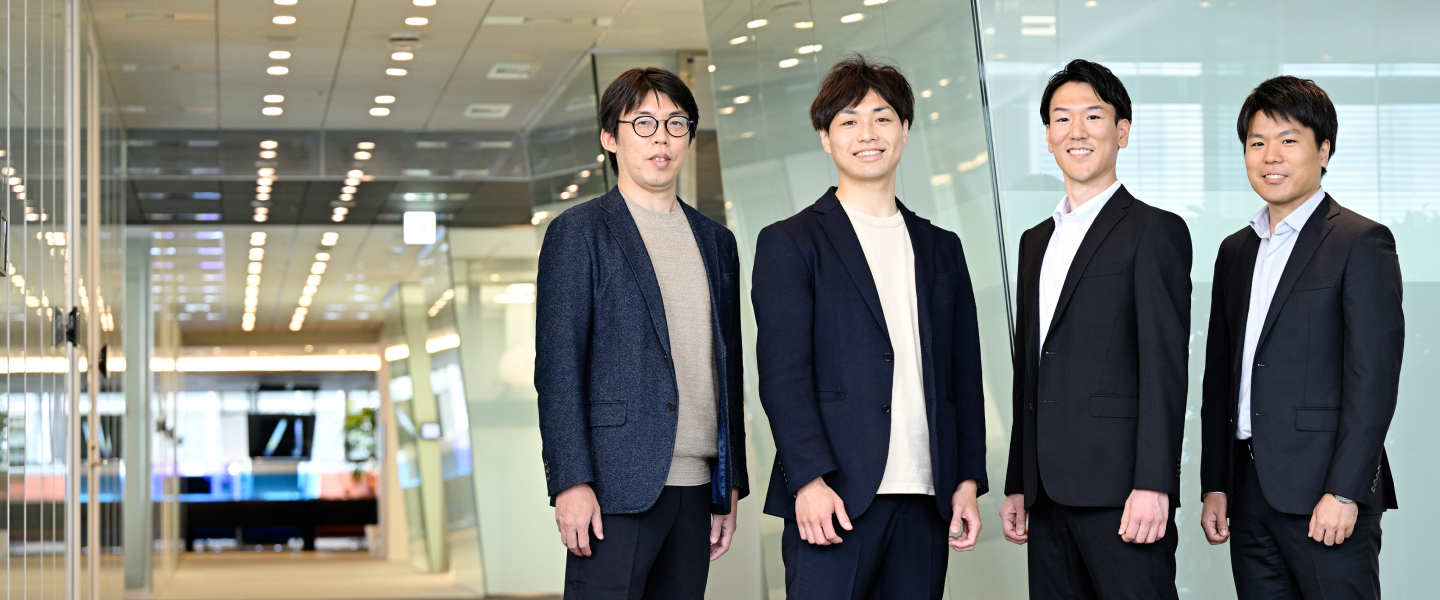
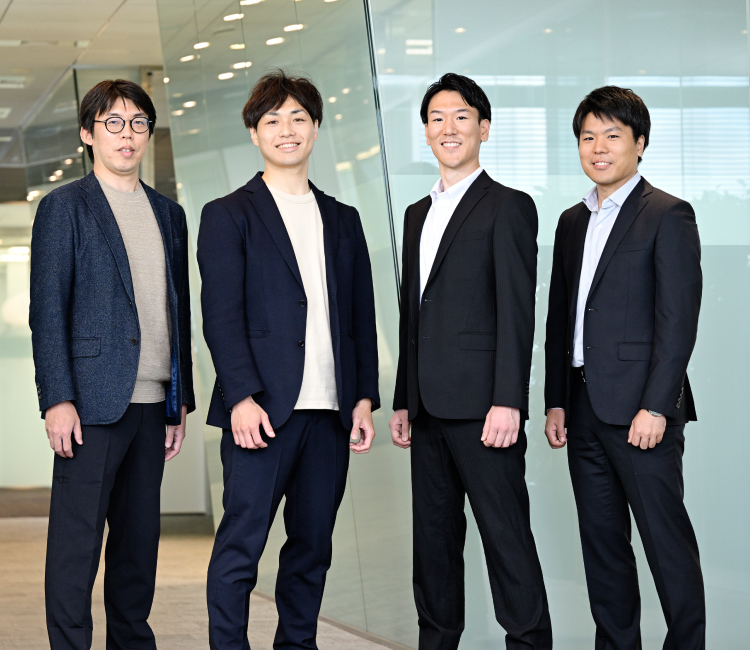
Glass solution to safeguard the precision 'eyes' of self driving
- #Mobility
Advanced driver assistance systems and self-driving vehicles have already carved out a place in the future of driving, and now artificial intelligence is making its way onto roads thanks to its ability to navigate tricky environments. But these sophisticated systems hinge on rapid and precise data collection to make the split-second decisions needed when driving. Enter LiDAR, a laser radar technology that functions as the 'eyes' of autonomous vehicles. AGC is leveraging its extensive expertise in materials to meet the increasing demand for LiDAR in the automobile sector by providing diverse material solutions that enhance performance.
Profile

Keita Muraoka
Manager Project Management Group Mobility Business Development Office Automotive Company

Kenichiro Shimo
Group Leader Functional Solution Asia Group Development Center Technology Office
Automotive Company

Nobuya Mineyuki
Hayashi Research Laboratory Innovative Technology Laboratories

Takayuki Kakegawa
Assistant Manager All AGC Business Promotion Team Marketing Group
Mobility Business Development Office Automotive Company
The era of self-driving cars is just over the horizon, promising efficient travel, secure transportation for the elderly, solutions for logistics labor shortages, and reduced accidents caused by human error. Autonomous vehicles will play a key role in this future, but to fulfill their promise they must be able to safely navigate any environment at any time.
Safe autonomous driving will depend on AI and advanced control units to accurately ascertain driving conditions. But no matter how advanced these technologies are, safety hinges on the continuous and reliable collection of data about the surrounding environment.
Advanced driver assistance systems (ADAS) rely on LiDAR -- short for light detection and ranging -- for the 'eyes' that see the surrounding environment.* LiDAR bounces laser light such as near-infrared off surroundings to measure distances and shapes.
* LiDAR, along with cameras, millimeter-wave radar and ultrasonic radar, is crucial for accurate detection of people and obstacles and plays a vital role in creating a digital 3D map of the vehicle's surroundings.
In order to integrate LiDAR into vehicles, automakers need durable glass that can withstand prolonged exposure to harsh conditions like sunlight, rain and shock.
Leveraging its extensive expertise in automotive safety glass, AGC has introduced Wideye™, a glass specially designed for LiDAR. The glass boasts high near-infrared transparency while protecting sensor modules against damage. Wideye™ is optimally suited for the long-term safety of autonomous driving systems and ADAS, and is planned to launch globally in 2024.
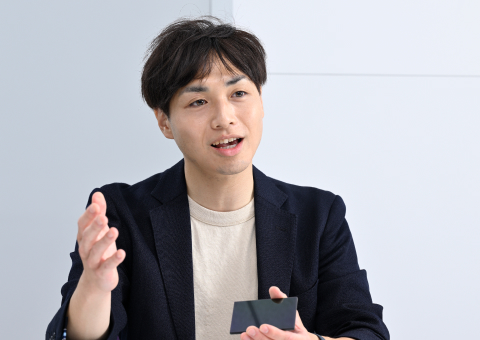
Keita Muraoka,Manager Project Management Group Mobility Business Development Office Automotive Company
“AGC is ahead of the curve in developing cutting-edge technologies. We pay close attention to the safety that society demands from automobiles,” said Keita Muraoka, head of project management in the company’s Mobility Business Development Office. “We're customizing solutions to fit the specs and designs of each vehicle type for optimal performance.”
While some covers for LiDAR sensor modules use resins like polycarbonate, opting for a glass cover like Wideye™ has added benefits. Glass is more resistant to aging from ultraviolet light than plastic, ensuring long-lasting transparency. It also works well with anti-reflection and water-repellent coatings. Moreover, heating elements can be installed in glass to prevent fogging and freezing.

Kenichiro Shimo, Group Leader Functional Solution Asia Group Development Center Technology Office Automotive Company
“AGC understands the requirements for automotive exterior glass and has the technology to meet them,” said Kenichiro Shimo, head of AGC’s Development Center Technology Office. “Our proven track record shows we have the means to offer comprehensive solutions, from design and process development to manufacturing and quality assurance."
Wideye™ is not just a cover for LiDAR modules. It also enhances LiDAR reliability and durability, and can be customized in countless ways to match each vehicle’s specifications while blending seamlessly with the exterior design.
Wideye™ owes its superior performance to three key AGC technologies.
The first involves getting the most out of glass materials. LiDAR cover glass requires exceptionally high transparency to minimize infrared light attenuation while being strong enough to meet automotive safety standards. AGC has developed the perfect composition of glass materials that provide both transparency and strength. The glass in Wideye™ enhances infrared light transparency over 20% compared to standard automotive glass, enabling sensors to see for greater distances.
The second technology focuses on shaping glass to match the form of LiDAR modules. LiDAR placement and specifications vary by vehicle. Hence, each LiDAR cover requires a unique shape and functionality.
Achieving high infrared light transparency in glass through heat processing has always been a challenge. AGC has overcome this hurdle with its unique curved-molding technology, which is based on vast experience in manufacturing myriad types of glass. Furthermore, AGC possesses a broad range of capabilities including coating technologies for enhanced anti-reflection features and water repellency, integrated molding with resin, and integrated electric heating. When skillfully combined, these capabilities allow AGC to produce different components depending on the needs of each customer.
The third technology is based on seamlessly integrating LiDAR into the vehicle without compromising exterior design. Optimal data collection requires LiDAR modules to be installed around the vehicle to provide 360-degree vision. But their size poses a challenge for automakers wanting to preserve aesthetics.
AGC’s design expertise helps automakers maintain the beauty of a car’s design. Through collaboration with LiDAR module suppliers and automakers, AGC starts cover design at the early stages of vehicle development, ensuring seamless integration with each vehicle model.
AGC has an extensive lineup of Wideye™, ensuring compatibility with all major types of LiDAR (Figure 1).
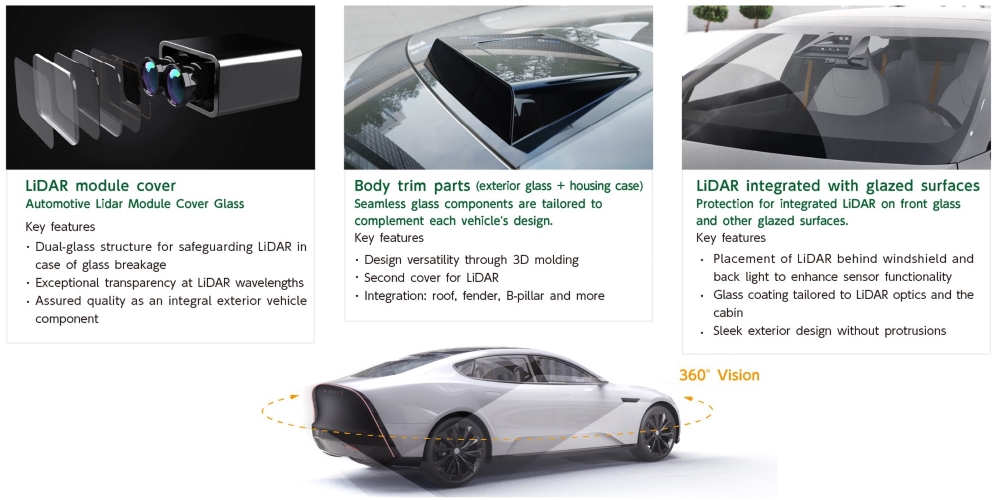
Figure 1: Wideye™ product lineup © AGC Automotive Europe
AGC is working to improve Wideye™ with groundbreaking super-hydrophobic technology, which significantly boosts water repellency while maintaining transparency.
Typically, LiDAR cover glass is treated with a coating to repel moisture and dirt. While well suited for automotive glass used in windshields, greater water repellency is needed for LiDAR.
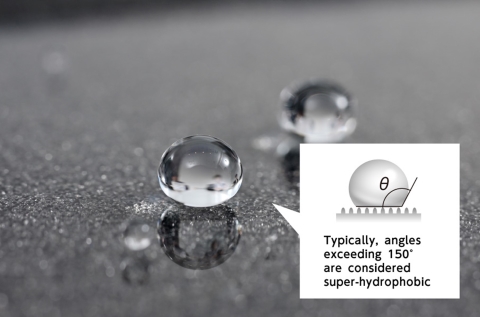
Figure 2: Glass coated with super-hydrophobic technology for enhanced water repellency. The higher the contact angle, the greater the repellency. Typically, angles exceeding 150° are considered super-hydrophobic.
Conventional water-repellent methods are based on a film coating applied to the smooth surface of glass. AGC's innovative super-hydrophobic technology, on the other hand, begins with an uneven glass surface that is then covered with the film coating. The surface irregularities in the glass create an air layer between water droplets and the glass, boosting repellency by providing a larger contact angle between glass and water. Similar to water rolling off a lotus leaf, this principle increases the contact angle from the conventional 110° to over 150°.
"Water repellency and optical characteristics vary depending on the type of glass, as each has a unique surface feature," said Nobuya Mineyuki, a researcher at AGC's Innovative Technology Laboratories specializing in super-hydrophobic technology. "To achieve super-hydrophobic characteristics, it is crucial to apply surface treatments optimized for each glass type. The effectiveness of our technologies for this purpose has been tested and confirmed."
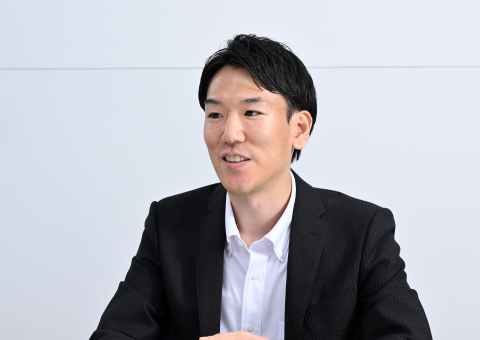
Nobuya Mineyuki,Hayashi Research Laboratory Innovative Technology Laboratories
Takayuki Kakegawa, a member of the Mobility Business Development Office in the Automotive Company, explained AGC's preparations for commercialization and mass production: "Our target is to start production in 2027. We are currently focused on improving durability and streamlining mass production processes, aiming to reduce maintenance through long-lasting water repellency."
Additionally, the application of super-hydrophobic technology extends beyond cover glass for LiDAR modules. Ongoing research and development may pave the way for wiperless windshields in the future.

Takayuki Kakegawa,Assistant Manager All AGC Business Promotion Team Marketing Group Mobility Business Development Office Automotive Company
At CES 2023, AGC showcased Wideye™ and its upcoming super-hydrophobic technology, attracting global attention. At the event, AGC staff spoke with visitors to gain insights into future improvements and practical applications.
One point AGC noted was the growing need for advanced communication features to improve autonomous driving and promote vehicle-to-everything connectivity. To further this, car windows are gradually being transformed into interfaces. Windows can be manufactured to selectively transmit information, signals and light, connecting vehicle interiors and passengers with the outside world.
AGC's LiDAR-related technology has the potential for use in other mobility sectors such as drones, agricultural and construction machinery, and robots. “In line with AGC's motto, 'Your Dreams, Our Challenge,' our goal is to lead the way in shaping a new mobility society. We're here to propose innovative technologies that turn dreams into reality,” said Muraoka. “If you have challenges or ideas that add new value to mobility, feel free to reach out."
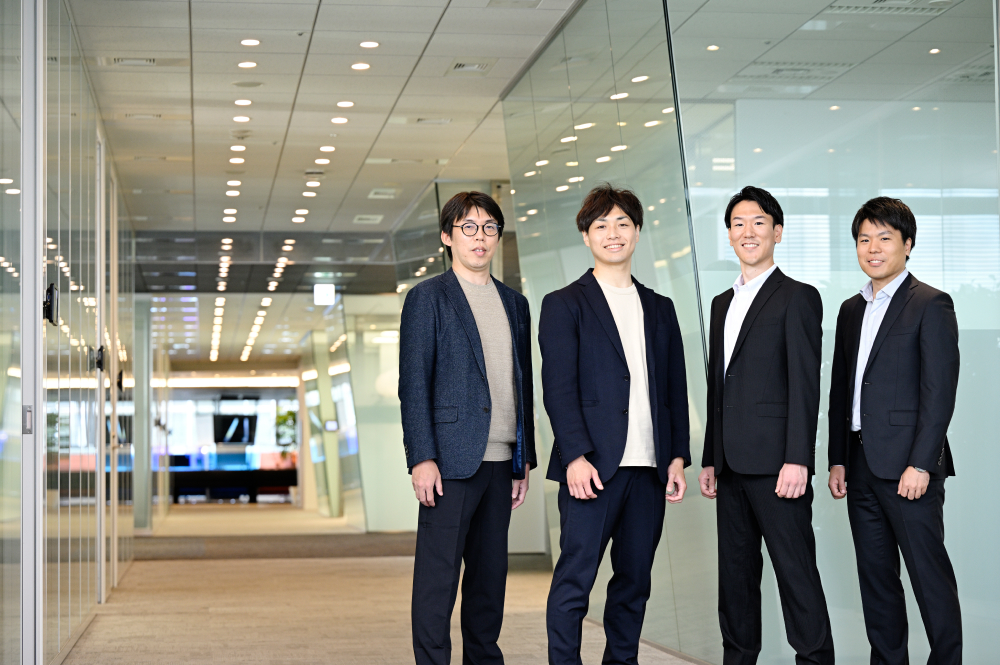
Reprinted from editorial advertisement in Nikkei xTECH, Octorber 2023
*Department names and titles are those at the time of the interview.





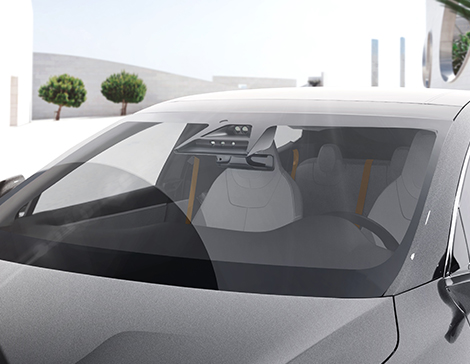 ®">
®">


